Striped Shore Crab: The Tide Pool Clean Up Crew
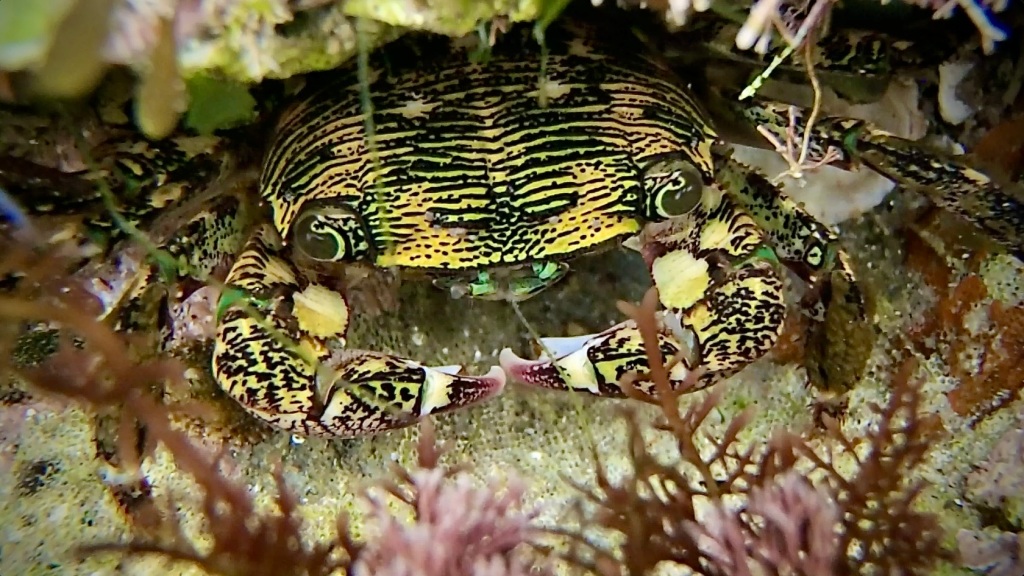
If you’ve visited Southern California tide pools, chances are pretty good you’ve seen a striped shore crab (Pachygrapsus crassipes) scuttling away from your steps. These small crabs are prolific in some intertidal zones, so much so that I hardly notice them when visiting the intertidal. But these creatures a worth a second look. From their remarkable ability to survive terrestrial conditions to their stunning coloration only visible when they let you get close, the striped shore crab is not to be overlooked.
Appearance
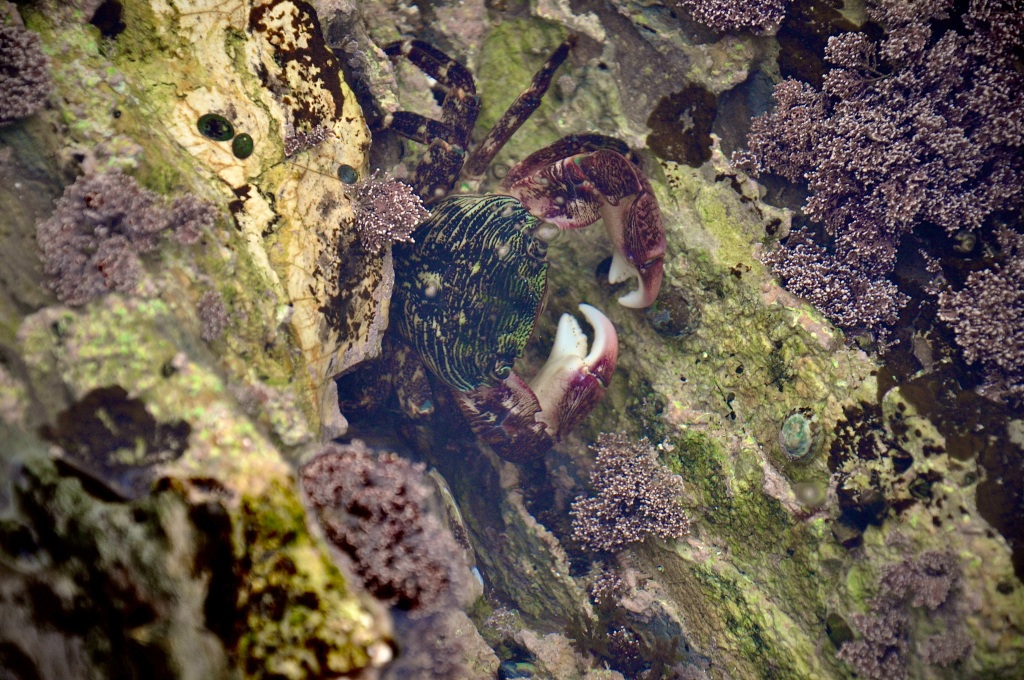
A first time tide pooler might not see much more of a striped shore crab than a dark blur plunging to the water at their approach, but if you are lucky (or patient) enough to get a longer look at one of these animals, you’ll seen a delicately colored and strikingly beautiful crab. Their carapaces (hard outer shell) are dark brown to black to dark purple, lined with stripes of electric green and blue.
In Southern California, the local coloration is often purple or red with the legs and underside turning to a rusty shade of maroon. The animal in the first image in this article is much greener than the typical Southern California coloration despite being observed in SoCal. Four legs for walking are flanked by two large claws that give this animal the colloquial name fiddler crab (although they are not a true fiddler crabs which belong to the family Ocypodidae).
Diet
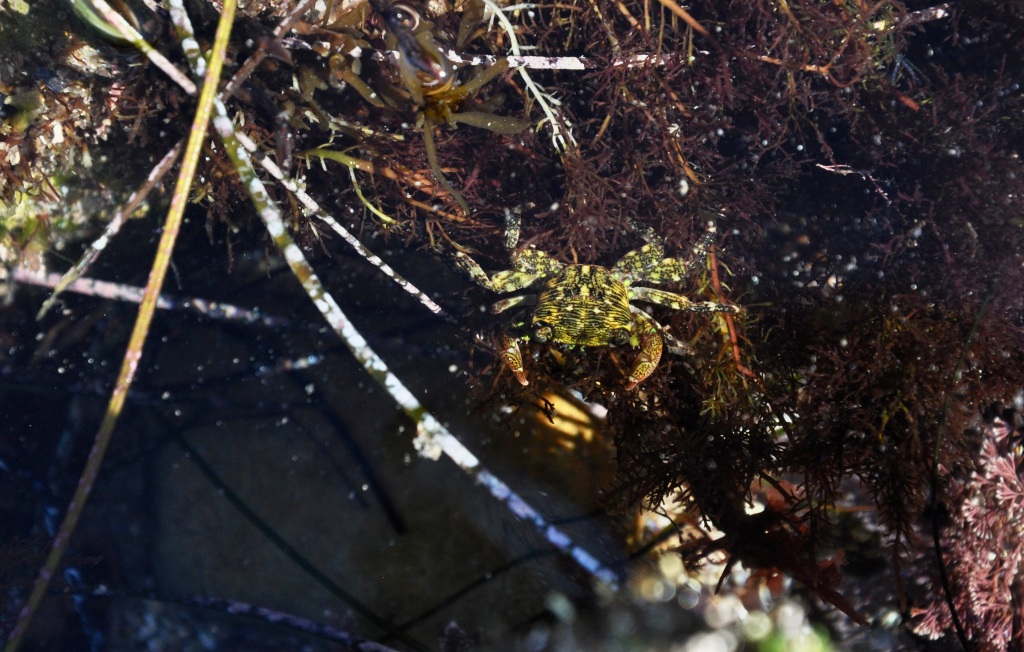
The striped shore crab is a hunter, scavenger, and grazer, willing to eat almost anything it comes across. During the day, you’ll probably see them grazing on algae or hiding until darkness falls. After dark, these crabs come out and actively hunt. They eat nearly anything: mussels, diatoms, snails, limpets, decaying matter and sometimes even each other if one has recently molted.
The main predators of the striped shore crab are birds and large fish. Avoiding predation is one of the reasons they are very active at night, sometimes moving along the rocks in the hundreds.
Habitat and Range
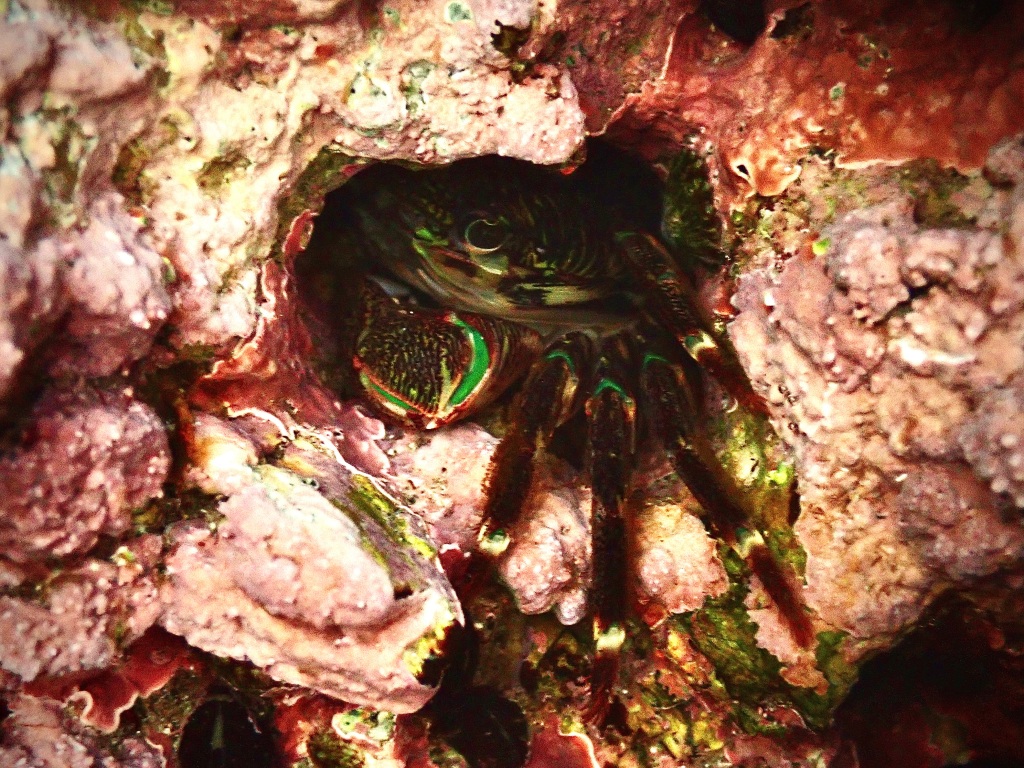
The striped shore crab, like many temperate eastern Pacific species, can be found from the Gulf of Alaska to the Gulf of California. Cold water currents from Alaska make much of this region in the eastern Pacific share similar water temperatures, allowing animals to have wide ranges. There is even a distinct variation of this crab that inhabits Korea and Japan.
Striped shore crabs are also adapted to a large variety of habitats. Rocky shores, mud flats, pier piles, and even estuaries are all home to these crabs. The only significant shoreline habitats you don’t find them are sandy and cobblestone beaches.
Behavior
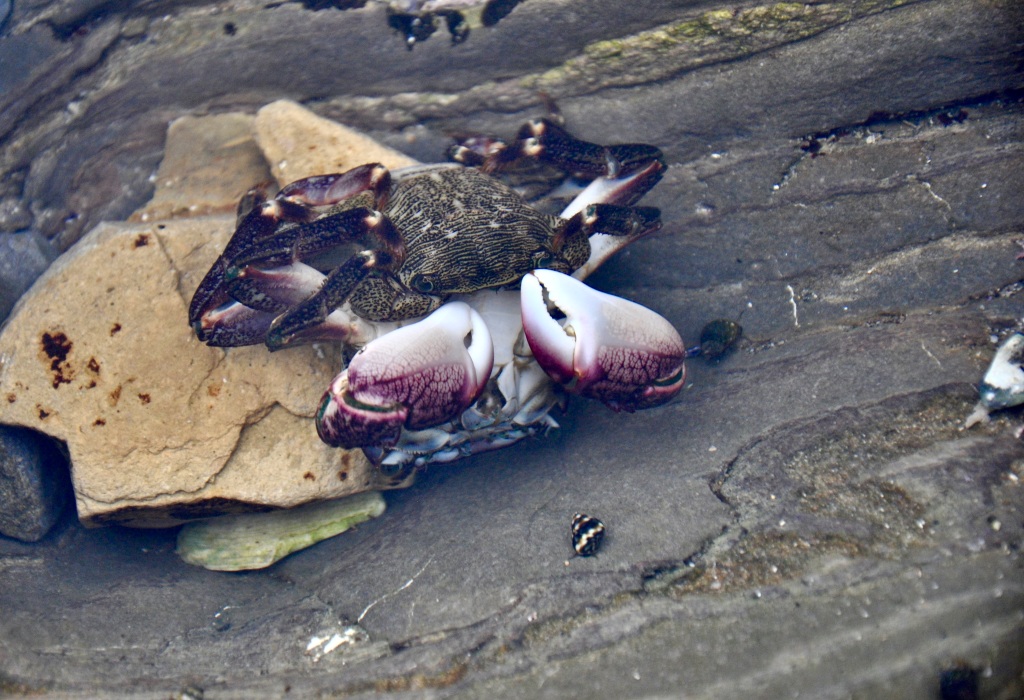
Often one of the first creatures big enough for a beach goer to notice, striped shore crabs often venture high into the intertidal. Despite being marine invertebrates, they can survive in terrestrial conditions for around 70 hours as long as their gills remain moist. You might see them dipping into the water to wet their gills before venturing back onto the rocks or mud to forage.
These crabs are most active at night but can be seen in great numbers during the day as well when foraging. Although usually very skittish and weary of humans, a patient tidepooler might get the chance to see one up close if you sit still long enough. If you get too close, smaller crabs will retreat into creaks in the rocks or into holes in the mud, but some of the larger individuals might spread their two large claws wide open to appear bigger and intimidate a potential predator as the animal in the image below is doing.
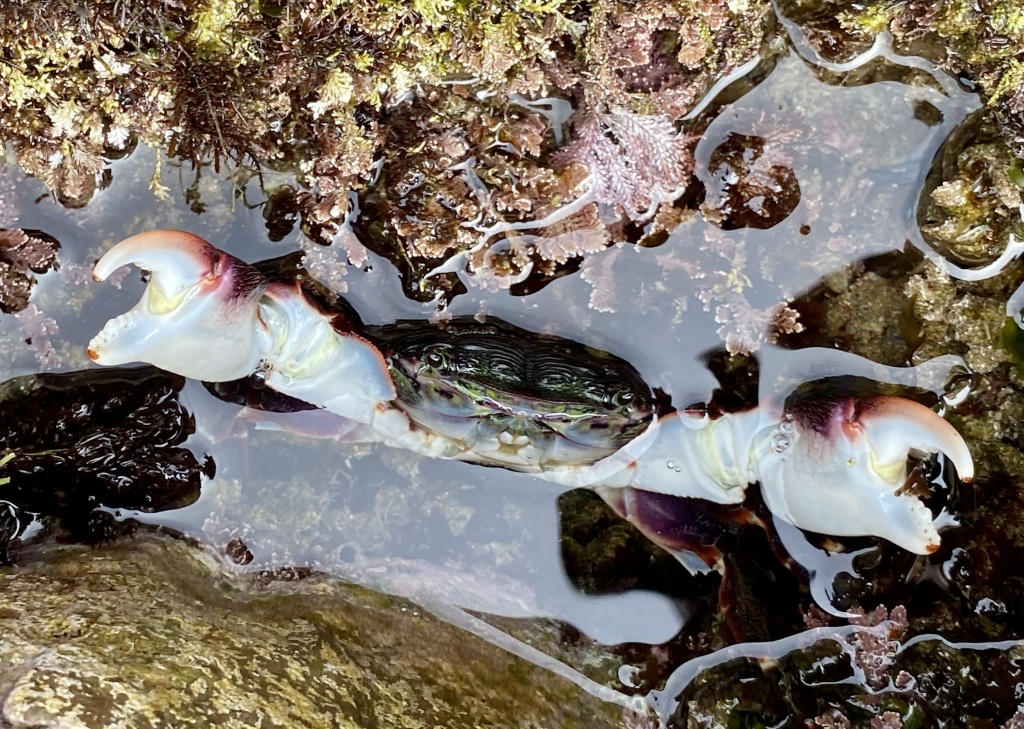
While you might find that striped shore crabs are difficult to photograph because they are wary of humans, there are a few circumstances when you can get close. I have had these crabs come out to forage on my hand and camera while I was holding still to photograph another animal. They’ll flee when you put your hand in the water, but once they decide you aren’t a threat, they might decide your hand looks like lunch!
You will probably notice what look like many dead striped shore crabs around the tide pools. While some of these may be dead crabs, they are more than likely molts. Crabs exoskeletons do not grow with the animal so every once in a while they must “shed their skin”— much like a snake— to grow bigger. Pick up one of these crab skeletons and look on the underside near the back. If there is a small hole in the shell, it is a molt. If not, they it’s a dead crab.

Categories
tags
Subscribe to the blog
Sign up to receive weekly emails with tide pooling information and guides so you never miss a post!

Leave a comment